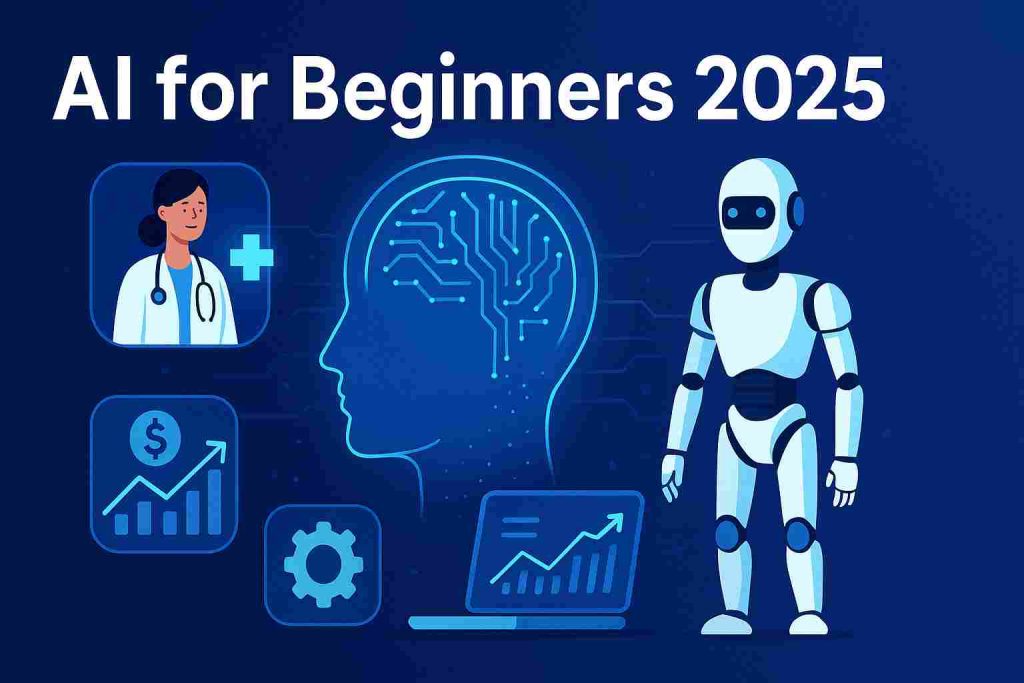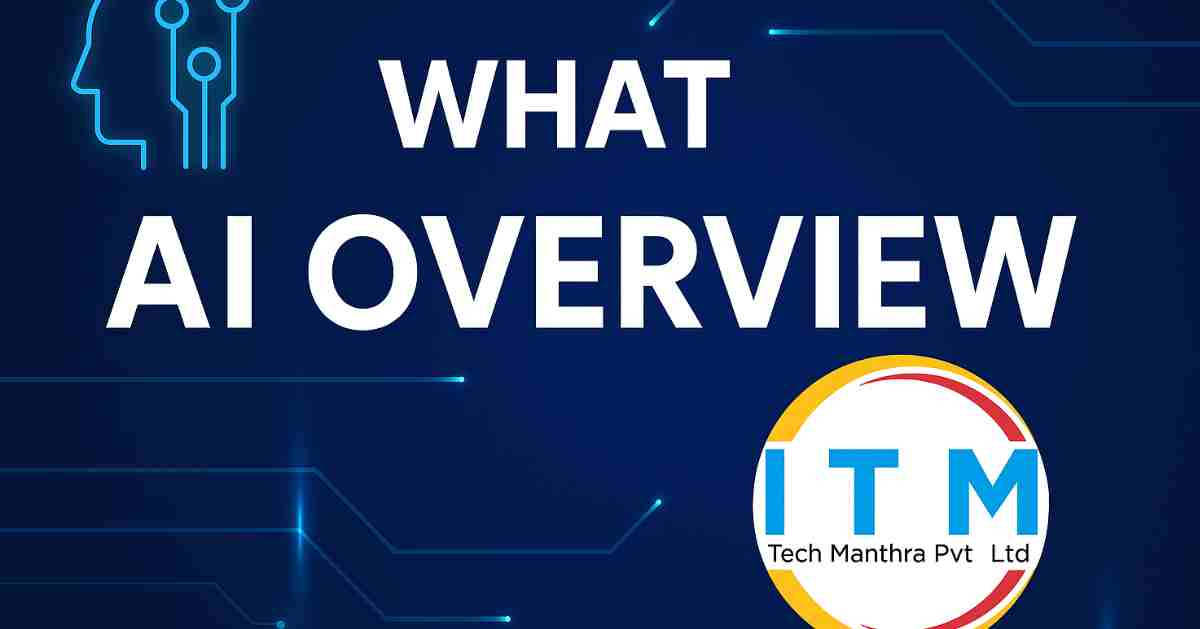AI refers to the ability of a computer to perform tasks that typically require human intelligence also requires Operations include perception, language understanding, learning, problem-solving, and reasoning.
The systems run on algorithms, data and computer power with which to mimic human thinking. The term “Artificial Intelligence” was first coined by John McCarthy at the Dartmouth Conference in Hanover, New Hampshire. This AI overview explains its foundations and how it developed.
Thoughts on AI
AI is just something you have to know about in order to read about how it will impact industries, economies and your own personal productivity. For beginners, marketers and business owner…the time to get enlightened and start using AI in day to day operations is now. This AI overview is just a starting point.
An Introduction to Artificial Intelligence
Broadly speaking, Artificial Intelligence has always been regarded as one of the most transformative technologies to ever exist. There was a time between the 30s and late 30s when a machine was considered akin to Frankenstein, now with Siri, it is a matter of predicting market trends. An AI guide for 2025 would teach you many things, such as what AI is, how it works, its types, its applications, its benefits, and even its ethical concerns.
This article offers a sacred space for the 2025 beginner to see how AI is presently molding our digital destiny and what possibilities lie ahead for us.
Working of AI
From large data sets, complex algorithms somehow model decision-making processes similar to human. Simply put, AI recognizes some patterns, learns from these patterns, and applies this learning either to predict outcomes or conduct autonomous execution of some tasks.
Data Collection
An intelligent system draws huge data sets from images, texts, voice commands, or user behavior. The more accurate and diversified the data is, the more intelligent the AI will be.
Algorithms
An algorithm is logical instructions in the background of an AI’s “thought processes.” For example, a machine learning algorithm can detect patterns in data and optimize its results over time.
Model Training
An AI model is one that learns from historical data; theoretically, it will keep adapting in the future, hence the name: Machine Learning. For instance, a spam filter learns what is spam and what is not spam by training on thousands of examples of messages sent through electronic mail.
Types of Artificial Intelligence
Artificial Intelligence is not one thing; it undergoes gradual metamorphosis into-degree-intelligence. Generally, these types are viewed as four stages in terms of how smart and how self-aware the AI is.
Reactive Machines
The simplest of systems, the AI systems react to some inputs but have no memories.
Example: IBM Deep Blue
Limited Memory AI
Can learn from past data and improve over time. This one is the kind most spread these days.
Example: Self-driving car
Theory of Mind AI
Currently Under Development
Will be able to understand emotions, intentions, and human mental models.
Self-Aware AI
Hypothetical
Will possess consciousness, self-awareness, and an independent sense of identity.
Quick Comparison Table
| Type of AI | Learning Ability | Memory | Real Examples |
| Reactive Machines | No | No | Deep Blue |
| Limited Memory | Yes | Yes | Self-driving cars, ChatGPT |
| Theory of Mind | In Research | Yes | Emotional AI (experimental) |
| Self-Aware AI | Hypothetical | Yes | None (conceptual) |
Tracking Differences: ML, Deep Learning, Generative AI, and AGI
AI is a broad term that encompasses many subfields. Let’s narrow down the most active ones.
Machine Learning
A downward specification of artificial intelligence whereby algorithms learn and decide from data and build predictions upon gaining experience.
Example: Email spam filters
Deep Learning
These involve algorithms tied through neural networks to handle unstructured data.
Example: Facial recognition
Generative AI (GenAI)
Creates new content: texts, images, music, or videos.
Example: ChatGPT, DALL·E
Artificial General Intelligence (AGI)
It is a general-purpose of an AI that can possibly do any intellectual thing a human being can.

Summary Table
| Technology | Key Feature | Human-Like Thinking? | Examples |
| Machine Learning | Learns from data | Partially | Google Ads, spam filters |
| Deep Learning | Uses neural networks | More advanced | Siri, self-driving cars |
| Generative AI | Creates new content | Creative mimicry | ChatGPT, DALL·E |
| AGI | General intelligence | Hypothetical | Still under Research |
Some of the Advantages and Disadvantages of Artificial Intelligence
Advantages of AI
- Automation of repetitive operations
- Work accuracy and efficiency
- Mass personalization
- Can work 24×7
- Acting as a Decision-Making Agent to give pragmatic solutions based on Data
Disadvantages of AI
- Algorithmic bias
- Lack of emotional intelligence
- Data privacy risk
- Job displacement issues
- Hallucination and misinformation
AI Applications: Industry-Niches
1. Healthcare
Diagnosis, patient monitoring, treatment planning
Example: IBM Watson, DeepMind
2. Finance
Credit scoring and fraud detection
Example: PayPal, Zerodha
3. Retail and eCommerce
Personalized shopping, chat support
Example: Amazon, Flipkart
4. Transport and Logistics
Route Planning and Vehicle Automation
Example: Tesla, Uber AI
5. Education
Adaptive Learning, AI Tutoring
Example: Duolingo, Khan Academy
6. Marketing
Smart advertising, predictive content generation
Example: Meta Ads, Google Smart Bidding
What Has Happened Till Now on the Evolution of AI
- 1956 – Birth of AI
Dartmouth Conference, McCarthy coined the term AI. - 1966 – ELIZA
The first program to be called a chatbot. Developed by Joseph Weizenbaum. - 1997 – Deep Blue beats Kasparov
- 2011 – Watson wins Jeopardy
- 2016 – AlphaGo Beats The Go Zhang
- 2020 – GTP-3 Was Launched
- 2022 – The Birth of AI Image Generators
DALL·E 2, Midjourney, etc. - 2023–25 – GenAI Era Starts
ChatGPT, Claude, Gemini have transformed industries.
What are Ethical Concerns and Future Challenges of AI?
- Algorithmic Biases
- Lack of Transparency (Black Box Problem)
- Privacy Risks
- AI Regulation & AI Bill of Rights
- Future: Human-Centered or Autonomous?
The Most Asked Questions About Artificial Intelligence
Simply, what is AI?
Artificial Intelligence refers to machines working at tasks that usually need human intelligence.
How is artificial intelligence used in everyday life?
Smart phones, smart home devices, online shopping, banking.
What are the 4 types of AI?
Reactive Machines, Limited Memory, Theory of Mind, Self-Aware AI
What is the difference between AI, ML, and DL?
AI is the parent concept, ML learns from data, and DL uses neural networks.
Will AI replace jobs in the future?
Maybe it will replace some tasks but it will also generate new job roles.
Conclusion: Why Understanding AI Is More Important Than Ever
Artificial intelligence will transcend shaping how we live and work and how we make decisions. If you are an entrepreneur or a student, knowledge of AI would give you the racing edge. In looking forward, the most important question is: How can we steer AI to become a greater boon for mankind?
